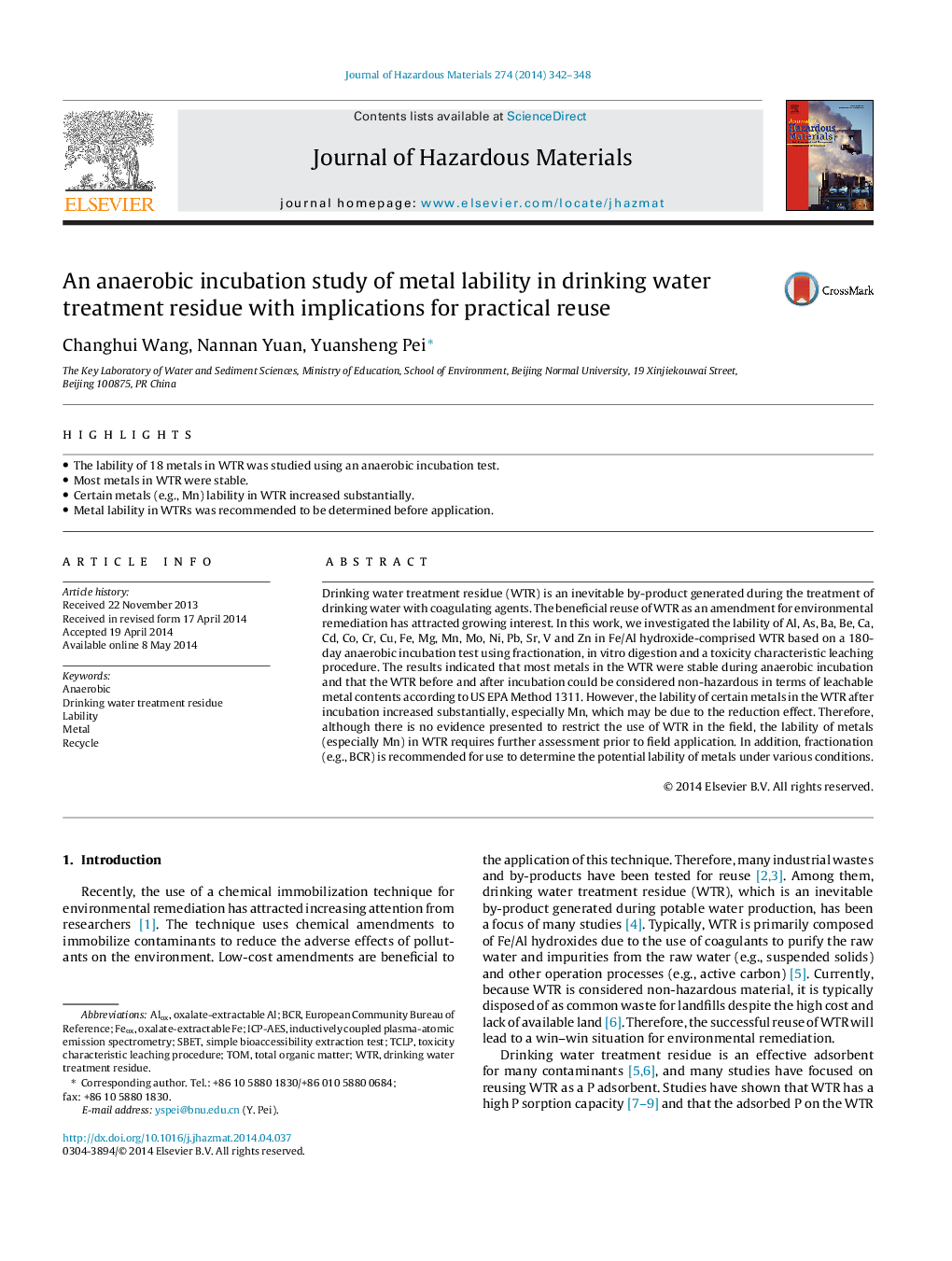| کد مقاله | کد نشریه | سال انتشار | مقاله انگلیسی | نسخه تمام متن |
|---|---|---|---|---|
| 576708 | 1453086 | 2014 | 7 صفحه PDF | دانلود رایگان |
عنوان انگلیسی مقاله ISI
An anaerobic incubation study of metal lability in drinking water treatment residue with implications for practical reuse
ترجمه فارسی عنوان
یک مطالعه انکوباسیون بی هوازی از قابلیت فلزی در باقی مانده از درمان آب آشامیدنی با پیامدهای کاربرد مجدد استفاده
دانلود مقاله + سفارش ترجمه
دانلود مقاله ISI انگلیسی
رایگان برای ایرانیان
کلمات کلیدی
موضوعات مرتبط
مهندسی و علوم پایه
مهندسی شیمی
بهداشت و امنیت شیمی
چکیده انگلیسی
Drinking water treatment residue (WTR) is an inevitable by-product generated during the treatment of drinking water with coagulating agents. The beneficial reuse of WTR as an amendment for environmental remediation has attracted growing interest. In this work, we investigated the lability of Al, As, Ba, Be, Ca, Cd, Co, Cr, Cu, Fe, Mg, Mn, Mo, Ni, Pb, Sr, V and Zn in Fe/Al hydroxide-comprised WTR based on a 180-day anaerobic incubation test using fractionation, in vitro digestion and a toxicity characteristic leaching procedure. The results indicated that most metals in the WTR were stable during anaerobic incubation and that the WTR before and after incubation could be considered non-hazardous in terms of leachable metal contents according to US EPA Method 1311. However, the lability of certain metals in the WTR after incubation increased substantially, especially Mn, which may be due to the reduction effect. Therefore, although there is no evidence presented to restrict the use of WTR in the field, the lability of metals (especially Mn) in WTR requires further assessment prior to field application. In addition, fractionation (e.g., BCR) is recommended for use to determine the potential lability of metals under various conditions.
ناشر
Database: Elsevier - ScienceDirect (ساینس دایرکت)
Journal: Journal of Hazardous Materials - Volume 274, 15 June 2014, Pages 342-348
Journal: Journal of Hazardous Materials - Volume 274, 15 June 2014, Pages 342-348
نویسندگان
Changhui Wang, Nannan Yuan, Yuansheng Pei,
